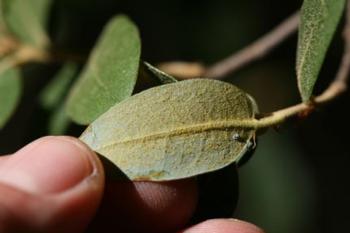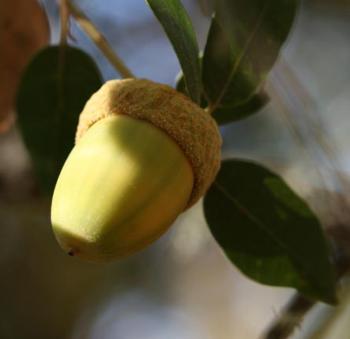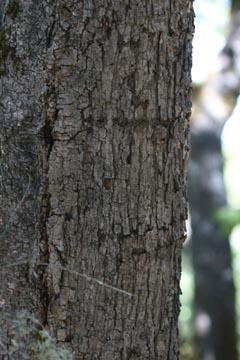Golden Oaks
Only one oak from this section is found in the north bay, so there is little problem with hybrids confusing identification. The acorn tends to be covered in tiny golden hairs, as are the leaf undersides. If the hairs are gently scraped off of the underside of the leaf, the leaf tissue appears as a pale teal(ish) color.
The relative susceptibility of canyon live oak is currently debated. It appears to be somewhat susceptible, but also tends to occur in regions that seem to be too dry for Phytophthora ramorum (the organism that causes sudden oak death) to persist, so it is apparently not exposed to the pathogen that often.
Quercus chrysolepis: Canyon Live Oak, Maul Oak. An evergreen tree, typically under 60 feet tall, with bark that quickly furrows to a checked pale grey, sometimes becoming slightly shaggy in appearance. Leaves: blade 1.25-2.25 inches, oblong and leathery, upper surface dark green, undersides often covered by a layer of golden hairs (that can be easily wiped away with a finger to reveal the blue-green leaf beneath), leaf edges highly variable, may or may not have teeth, tip usually pointed. Acorns: mature in 2 years. The cap is made up of thick scales covered in golden hairs, is often shallow or sometimes bowl shaped. The acorn shell (1-1.25 inches) is wooly inside.




